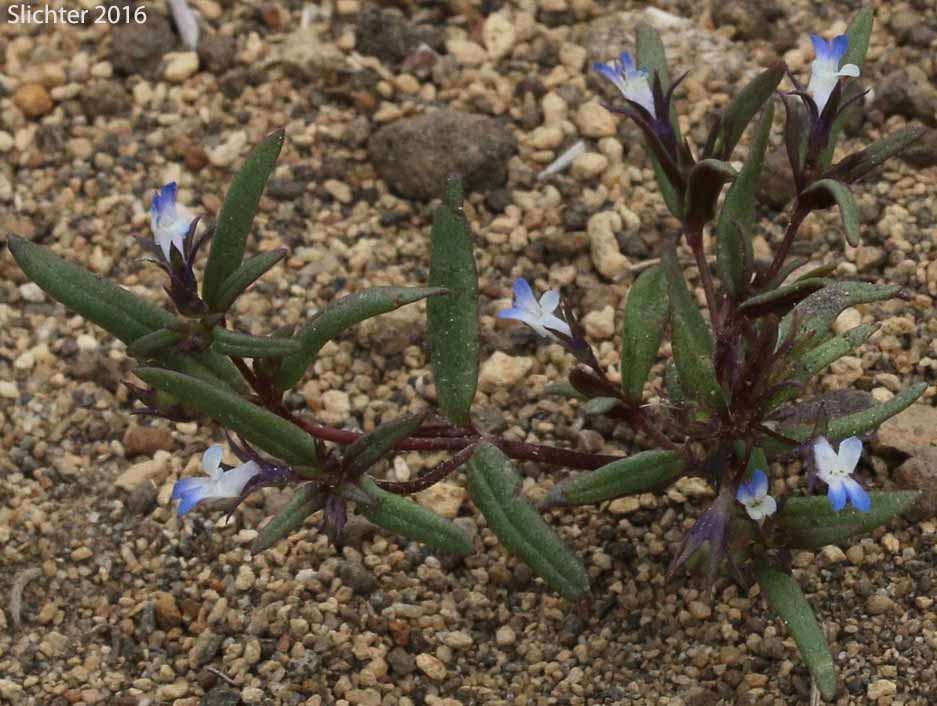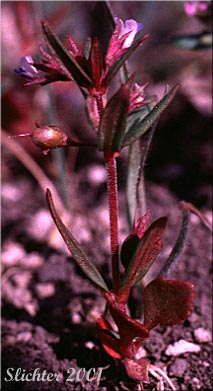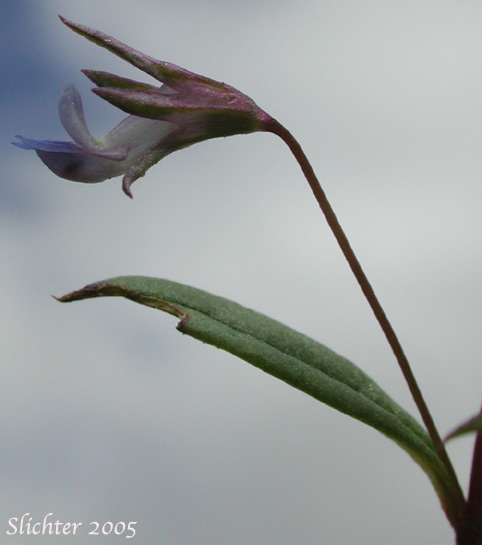

 Characteristics:
Characteristics:
Small-flowered blue-eyed mary is an upright to spreading and lax annual wildflower ranging from 5 to 40 cm in height or length. The stems are simple or unbranched and covered with tiny hairs (See the minute, shiny hairs on the stem in the photo at right.)
The lower stem leaves are short-petiolate and spatulate or rounded in shape with entire margins. The lower leaves typically are shed quickly. The mid and upper stem leaves have reduced petioles or are sessile and narrowly elliptic, oblong, or linear in shape. The upper leaves also may appear whorled. The upper leaves are up to 5 cm long and up to 12 mm wide.
The inflorescence consists of one to several flowers in the axils of the upper leaves. The flowers are strongly bilabiate or two-lipped with two larger upper lobes (not completely separated or cleft) and three smaller lower lobes with the middle lobe folded onto itself like a keel (as in peas). The calyx is 3-6 mm long with the 5 acute lobes longer than the tube. The corolla is 4-7 mm long and is blue with a white upper lip. The corolla tube is noticeably bent near the base and bends over the lower side of the calyx at an oblique angle. The seed capsule is ellipsoid, shorter than the calyx, and 3-5 mm long and 2-3.5 mm wide (See photos.).
Small-flowered blue-eyed mary is found on seasonally moist soils from grasslands to mossy, rock-covered slopes, and along shady forest edges. It is often found along the disturbed margins of roadways as viewed by the photos on this page.
Small-flowered blue-eyed mary may be found over much of western North America. It may be found from the Alaskan panhandle south to California and east to Colorado, Michigan and Ontario.
